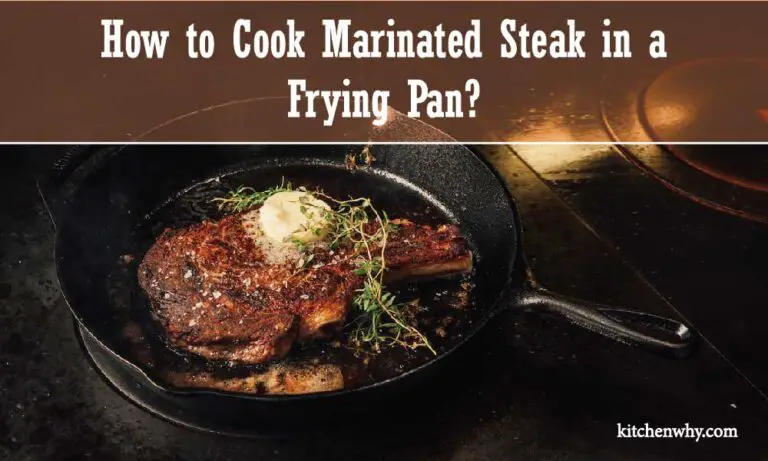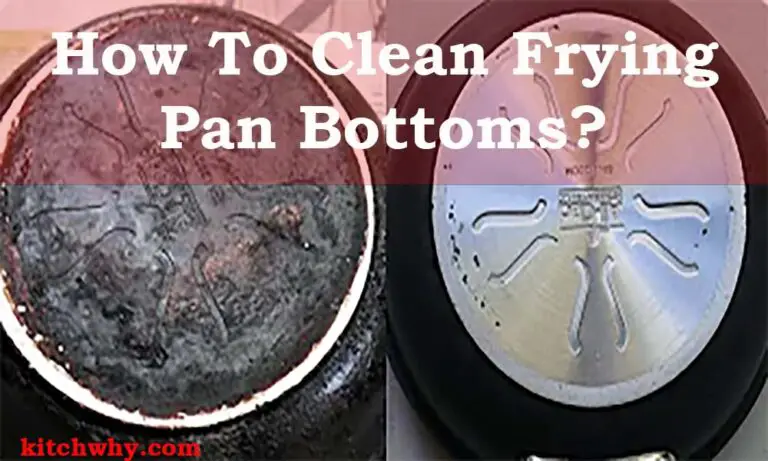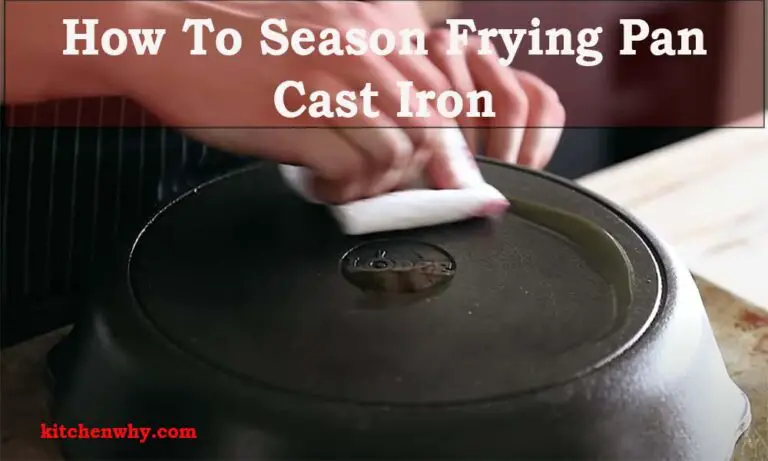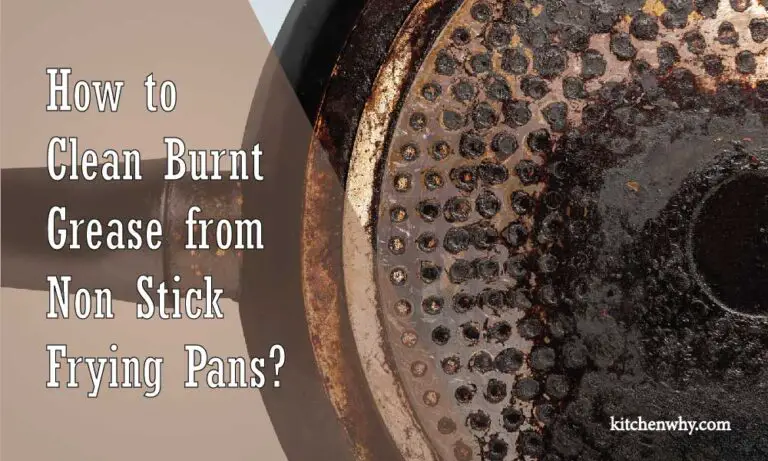How to Store Stainless Steel Cookware to Prevent Damage? 7 Easy Step

To prevent damage to stainless steel cookware, store it in a dry and clean place away from other metal objects. Stainless steel cookware is a popular choice in the kitchen due to its durability and easy maintenance.
However, even durable cookware can be damaged if not properly stored. Storing stainless steel cookware in a disorganized manner, in contact with other objects, or exposing it to humidity can cause scratches, stains or rust. To prevent damage to your stainless steel cookware, it’s crucial to store it in a dry and clean place with adequate space for each item.
In this article, we will discuss some tips on How to Store Stainless Steel Cookware to Prevent damage to keep it in good condition for years to come.
Step By Step Process of How to Properly Store Stainless Steel Cookware to Prevent Damage?
Stainless steel cookware is a popular choice among home cooks due to its durability and versatility. However, improper storage can lead to scratches, dents, and other forms of damage. In this article, we will provide you with essential tips on how to store your stainless steel cookware correctly to maintain its quality and prolong its lifespan.
- Clean and Dry Thoroughly: Before storing your stainless steel cookware, it is crucial to clean it properly. Wash each piece with warm, soapy water, and use a non-abrasive sponge or cloth to remove any residue. After washing, ensure that the cookware is thoroughly dried to prevent the formation of water spots or rust.
- Use Protective Dividers: To prevent scratches and dents, consider using protective dividers between the stacked pots and pans. These dividers can be made of soft materials such as felt or cloth, or you can opt for specialized cookware protectors available in the market. The dividers act as a cushion and minimize the risk of damage caused by direct contact between the stainless steel surfaces.
- Stack Carefully: When stacking your stainless steel cookware, take care to avoid excessive pressure or weight on the bottom pieces. Place larger pots at the bottom and smaller ones on top, ensuring a stable and balanced stack. Be mindful of any lids or handles that may be prone to damage and position them in a way that minimizes stress.
- Consider Hanging Options: If you have limited cabinet space or want to showcase your cookware, hanging your stainless steel pots and pans can be an excellent storage solution. Utilize sturdy hooks or a pot rack mounted on the wall or ceiling. Make sure to leave enough space between each piece to prevent them from banging against each other.
- Avoid Stacking Other Heavy Objects: To prevent damage, avoid placing heavy objects on top of your stacked cookware. The weight can cause dents or distort the shape of the pots and pans. Store your stainless steel cookware separately from other kitchen utensils and appliances, ensuring they have their dedicated storage area.
- Use Soft Cloth or Towels as Liners: When storing your stainless steel cookware in cabinets or drawers, line the storage area with soft cloth or towels. This added layer of protection prevents direct contact between the cookware and hard surfaces, reducing the risk of scratches.
- Regular Maintenance: Even with proper storage, stainless steel cookware requires regular maintenance. Check for any signs of damage, such as loose handles or scratched surfaces, and address them promptly. Regularly clean and dry your cookware, as mentioned in step 1, before storing it to maintain its condition.
By following these tips, you can ensure that your stainless steel cookware remains in excellent condition, free from scratches and damage, for years to come.
For more information on maintaining and caring for your kitchen tools, check out our comprehensive guide on Kitchen Utensil Maintenance.
Understanding Stainless Steel Cookware
Stainless steel cookware is an excellent choice for its durability and versatility. Its non-porous surface does not react with acidic foods and prevents rust and corrosion. Before learning how to store stainless steel cookware, it is crucial to understand its advantages and factors to consider when purchasing.
Advantages Of Using Stainless Steel Cookware
Stainless steel cookware offers several benefits, including:
- Durability: It is sturdy, long-lasting, and resistant to cracks, chips, and dents.
- Versatility: It can be used on various heat sources, including induction, gas, electric, and ceramic.
- Aesthetics: Its shiny exterior adds an attractive touch to a kitchen’s décor.
- Safety: It does not leach harmful chemicals or metals into your food, making it a safe choice for cooking and storing food.
- Easy to clean: It is dishwasher safe and easy to maintain.
Factors To Consider When Buying Stainless Steel Cookware
When choosing stainless steel cookware, consider the following factors:
- Grade: The higher the grade, the better the quality of the cookware.
- Thickness: Thicker cookware distributes heat evenly and provides better cooking results.
- Cladding: Look for cookware with a multi-layered base to prevent burning and provide even heating.
- Handles: Handles should be securely attached and provide a comfortable grip.
- Lid: It should fit snugly and retain heat and moisture.
- Price: High-quality stainless steel cookware can be expensive, but it is a worthwhile investment that will last for years.
Proper Cleaning Techniques For Stainless Steel Cookware
To keep your stainless steel cookware in good condition, follow these cleaning techniques:
- Wash the cookware with hot, soapy water and a soft sponge or cloth.
- Do not use steel wool, abrasive cleaners, or harsh chemicals that can scratch the surface.
- Dry the cookware thoroughly before storing to prevent water spots.
- If the cookware develops stains or discoloration, use a mixture of vinegar and water or baking soda and water for gentle cleaning.
- Don’t stack the cookware without using protective material.
- Store it in a cool and dry place to avoid moisture and humidity that can cause rust and corrosion.
By understanding the advantages and factors to consider when purchasing stainless steel cookware and implementing proper cleaning and storing techniques, it can provide you with a lifetime of use and enjoyment in your kitchen.
Common Mistakes In Storing Stainless Steel Cookware
Stainless steel cookware is the preferred choice for many professional chefs and home cooks. Not only does it have a sleek and modern design, it is also durable and easy to maintain. However, improper storage can lead to damage and reduce the lifespan of your cookware.
We will cover the common mistakes in storing stainless steel cookware and how to prevent them.
Overcrowding In Cabinets Or Drawers
One of the most common mistakes when storing stainless steel cookware is overcrowding. Piling up pots and pans can lead to scratches and dents, making them look worn and unappealing. To prevent this from happening, consider the following tips:
- Store each pot and pan separately to avoid scratches and dents.
- Use organizers or dividers to maximize space and keep items from touching each other.
- If storing in cabinets, arrange them by size with the larger items at the bottom and the smaller ones on top.
Stacking Improperly With Other Cookware
Another mistake many people make is stacking their stainless steel cookware incorrectly. When stacked improperly or with other materials, such as cast iron or copper, it can lead to scratches or marks on the surface. Here are some tips on how to stack your cookware properly:
- Only stack pots and pans of the same size and shape to prevent damage.
- Use felt or cloth between each item to avoid scratches and marks.
- Never stack stainless steel cookware with other materials as they can react with each other and cause stains or damage.
Exposure To Extreme Temperatures
Exposing your stainless steel cookware to extreme temperatures can cause warping, which can make them unusable. Avoid exposing your cookware to temperatures over 500 degrees fahrenheit (260 degrees celsius) and follow the manufacturer’s recommendations for oven and stovetop use. Here are some additional tips to keep your stainless steel cookware safe:
- Do not put cold cookware directly on a hot stovetop as it can cause warping.
- Allow your cookware to cool down before cleaning or storing.
- Never put your stainless steel cookware in the freezer as it can cause warping and damage.
Neglecting To Dry The Cookware Completely
Neglecting to dry your stainless steel cookware completely can lead to water spots, stains, and rust. To ensure your cookware lasts for years to come, follow these tips:
- Dry your cookware immediately after washing with a soft cloth or towel.
- To remove any stains or water spots, use a mixture of vinegar and water or baking soda and water.
- Store your cookware in a dry and well-ventilated area to avoid moisture buildup.
By following these tips, you can prevent damage to your stainless steel cookware and ensure it will last for years to come. Proper storage and care can make all the difference in the lifespan of your cookware.
Best Practices For Proper Storage Of Stainless Steel Cookware
Organizing And Decluttering Storage Space
Before storing your stainless steel cookware, it is essential to clear out any unnecessary items from your storage space. Decluttering your storage area allows for more organized space, making your cookware easier to store and access. Here are recommended steps to begin the process of decluttering your storage area:
- Group items that are similar and place them together.
- Get rid of any duplicate items or utensils that you no longer use.
- Consider basket storage or shelving units to make your cookware more accessible.
- Utilize any wall space by hanging hooks or racks to increase storage space.
Utilizing Proper Stacking Techniques
Stacking your stainless steel cookware without proper care can scratch or dent the pots and pans. Here are the best stacking tips to ensure that your cookware remains in its best condition:
- Arrange your pots and pans by size, smallest to largest.
- Place a soft cloth or paper towel between each pot or pan to prevent scratches during storage.
- Store cookware in cabinets with the largest items at the bottom and smaller ones on top.
- Avoid stacking your cookware above six items to avoid any unfortunate accidents.
Using Protective Padding Or Coating To Prevent Scratches
Another way to protect your cookware from scratches and dents is by covering them with protective padding or coating material. Here are some options for protecting your cookware from scratches:
- Use felt pads or silicone cut-outs in between pots and pans to reduce the likelihood of scratches.
- Acquire foam sheets or thin towels to wrap up your cookware to keep them from rubbing together.
- Consider a non-slip shelf liner for your storage areas, which provides both ventilation and cushioning for your cookware.
Storing Lids Separately
One of the most effective techniques for storing cookware is to separate the lids from the pots and pans themselves. Here are some steps for storing lids in a safe and efficient manner:
- Keep the lids’ sizes separate, just like with the pots and pans.
- Consider having a designated lid storage area.
- Store lids in a vertical, upright position if possible.
- Label your lids with a corresponding label marking for convenience.
Following best practices for proper storage of your stainless steel cookware will help extend the life of your pots and pans, keeping them looking and functioning well enough to use for years to come. Take the time to declutter and unify your storage space, properly utilize stacking techniques, add protective padding or coating, and store lids separately for an optimal storage experience.
The Benefit Of Properly Stored Stainless Steel Cookware
Storing your stainless steel cookware correctly can greatly enhance its longevity, preserve its sleek look, and save you money in the long run. In this section, we will delve into the benefits of storing your stainless steel cookware appropriately with a focus on increased lifespan, an improved cooking experience, hygiene benefits, and cost savings.
Increased Lifespan Of The Cookware
Stainless steel cookware is a significant investment, so it’s important to take care of it. Properly storing your cookware will significantly increase its lifespan and prevent damage. Here are some points to consider:
- Stacking stainless steel cookware can lead to scratching, which can result in dullness and corrosion. Store your cookware by hanging it on a pot rack, separating it with felt pads, or placing a piece of paper towel between each piece.
- Chemical reactions can cause stainless steel cookware to pit, rust or stain when exposed to certain materials. It’s critical to store your cookware away from harsh chemicals, acidic foods, and salt.
- High temperatures can damage the composition of the stainless steel. Make sure to store your cookware in a cool, dry place away from the stove or dishwasher.
Improved Cooking Experience
Using properly stored stainless steel cookware will result in a better cooking experience. Here are some points to consider:
- Stainless steel cookware that is well maintained will heat more evenly, allowing food to cook at the right temperature.
- Storage solutions that allow you to see all your cookware will make it easier to find the right pot or pan for the job, simplifying your cooking experience.
- Cookware that is stacked precariously can tip over, causing a mess and potentially resulting in accidents. Proper storage solutions eliminate the risk of accidents in the kitchen.
Hygiene Benefits
Stainless steel is an ideal material for cookware as it is non-porous and non-reactive, reducing the risk of bacteria growth and food contamination. Properly storing your stainless steel cookware will result in better hygiene. Here are some points to consider:
- Storing cookware in a dry and cool environment prevents the growth of bacteria, which leads to foul odors and stains.
- Storing cookware away from chemicals and acidic foods prevents cross-contamination, making your kitchen a safer space to cook.
- Storing cookware on a rack ensures proper air circulation and drying time after cleaning, which helps to prevent bacteria growth.
Cost Savings
Properly stored cookware can save you money in the long run, by reducing the frequency of repairs or replacements. Here are some points to consider:
- Scratched or pitted cookware can cause hot spots, resulting in uneven cooking and potentially burning food, leading to higher food waste and energy costs.
- Cookware that is stacked precariously can result in accidents, leading to the need for repairs or replacements. Proper storage solutions eliminate the risk of accidents in the kitchen.
- Storing cookware correctly reduces the frequency of corrosion, dullness, and rust, which can lead to damage and potentially render the cookware unusable. By extending the lifespan of your cookware, you will save money in the long run.
Storing your stainless steel cookware correctly is essential to its longevity, to getting the most out of your cooking experience, maintaining good hygiene, and saving money in the long run. By following these simple storage tips, you can have your cookware in top condition, looking great and performing brilliantly for years to come.
Frequently Asked Questions On How To Store Stainless Steel Cookware To Prevent Damage?
What Causes Stainless Steel Cookware To Get Damaged?
Misuse, using harsh chemicals, and improper cleaning techniques may cause damage to stainless steel cookware.
Should I Stack Stainless Steel Cookware?
Stacking stainless steel cookware is not recommended as it may cause scratches, dents or warping.
How Should I Store My Stainless Steel Cookware?
Store your stainless steel cookware in a cool and dry place, use pan protectors, and hang them if possible.
Is It Okay To Store Wet Cookware?
It is not recommended to store wet cookware as it may cause discoloration, rust and damage.
Can I Store Food In Stainless Steel Cookware?
Storing food in stainless steel cookware is safe but not recommended for long storage periods or acidic foods.
How Often Should I Clean My Cookware?
Clean your stainless steel cookware after every use with mild soap and warm water to maintain its quality and longevity.
How to Store Stainless Steel Cookware to Prevent Damage?
To prevent damage to stainless steel cookware, store it in a dry and clean place away from other metal objects. Stainless steel cookware is a popular choice in the kitchen due to its durability and easy maintenance.
Conclusion
Proper storage of your stainless steel cookware is vital to maintain its shiny and durable appearance. By following the five guidelines mentioned above, you can keep your pots and pans in excellent condition for many years of cooking enjoyment. Be sure to clean your cookware thoroughly before storing it, avoid stacking multiple pieces on top of each other, protect the surface with padding or cloth, use appropriate hangers or hooks, and choose a dry location with ample ventilation.
Remember that proper storage is not only about preventing damage but also about preserving the good qualities of your cookware. With these easy steps, you can extend the life of your stainless steel cookware and enjoy hassle-free cooking for a long time.
Invest some time and effort in taking care of your cooking essentials, and they will surely reward you with delicious and healthy meals.







